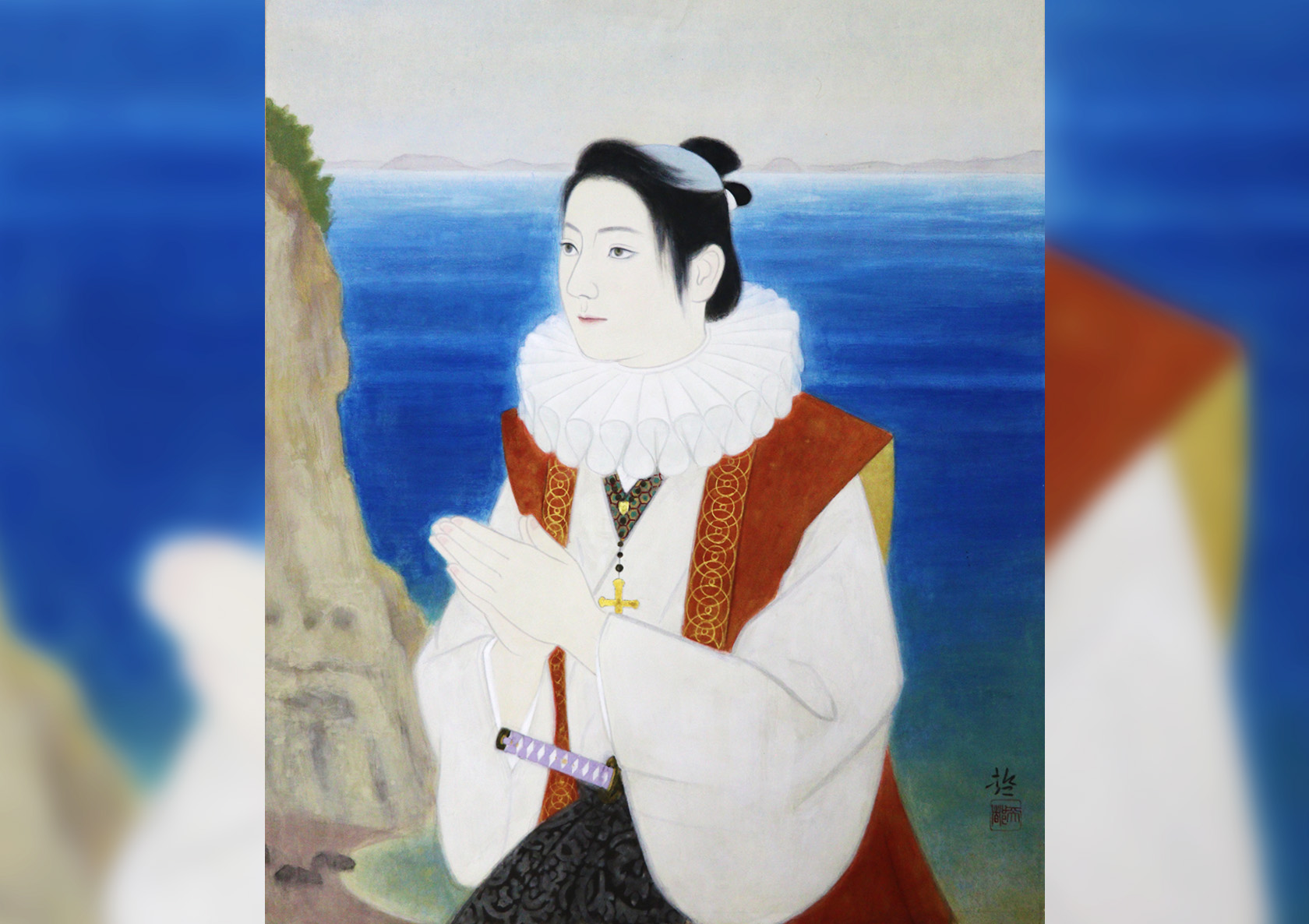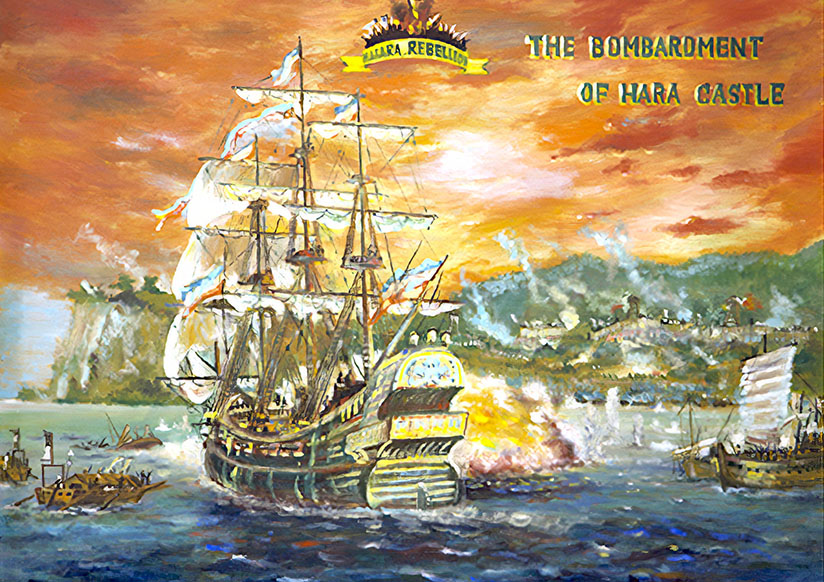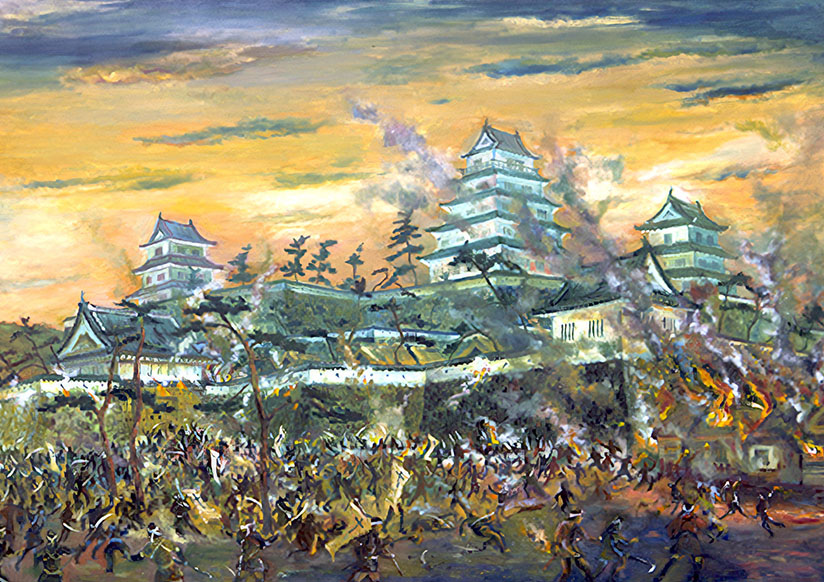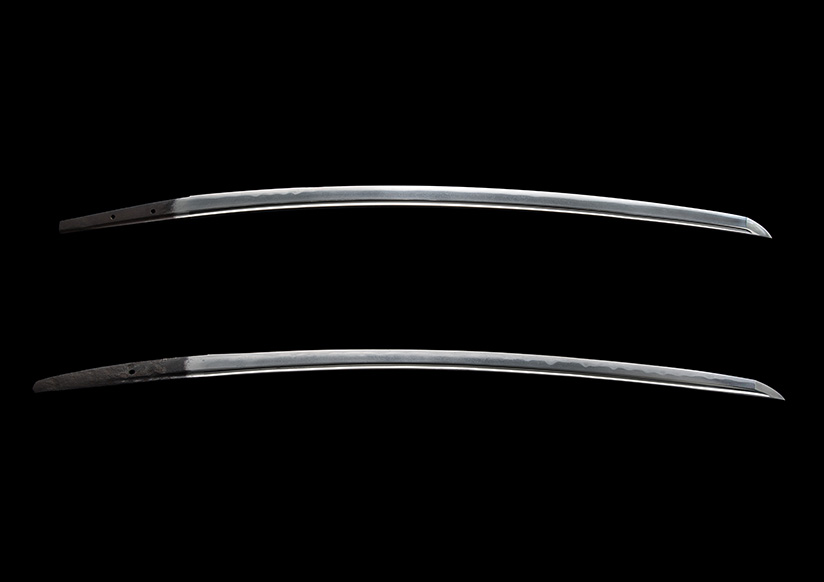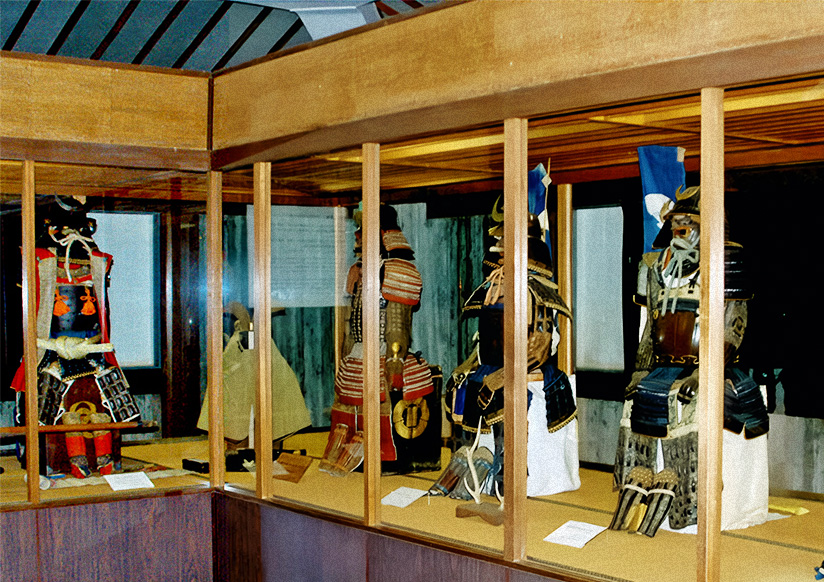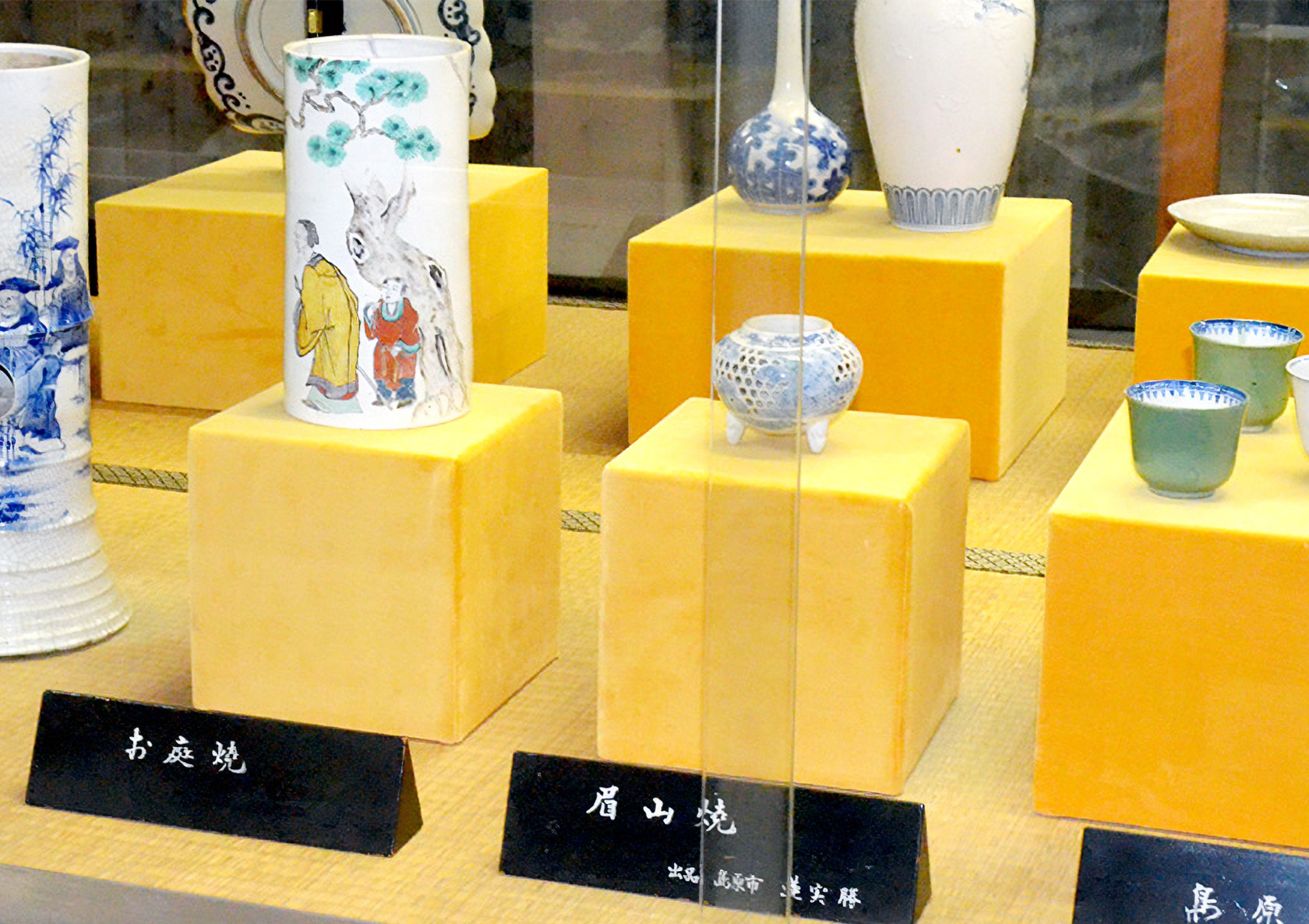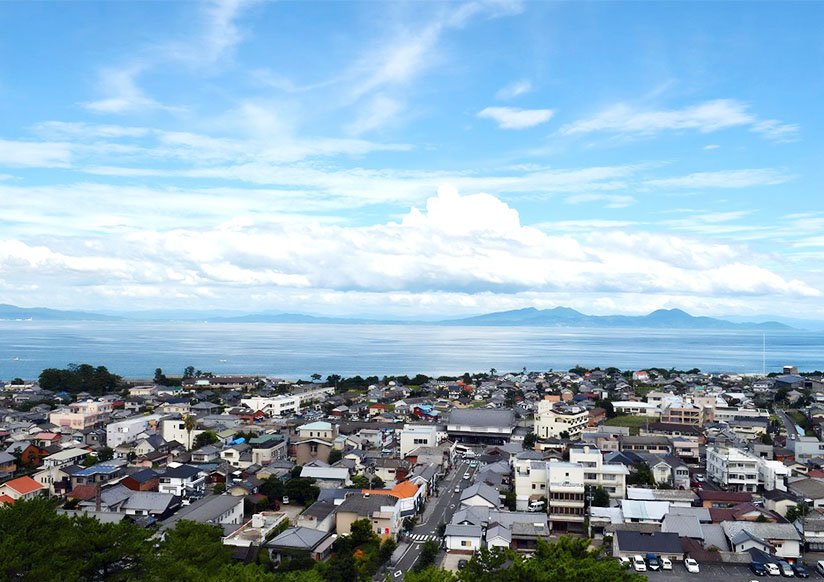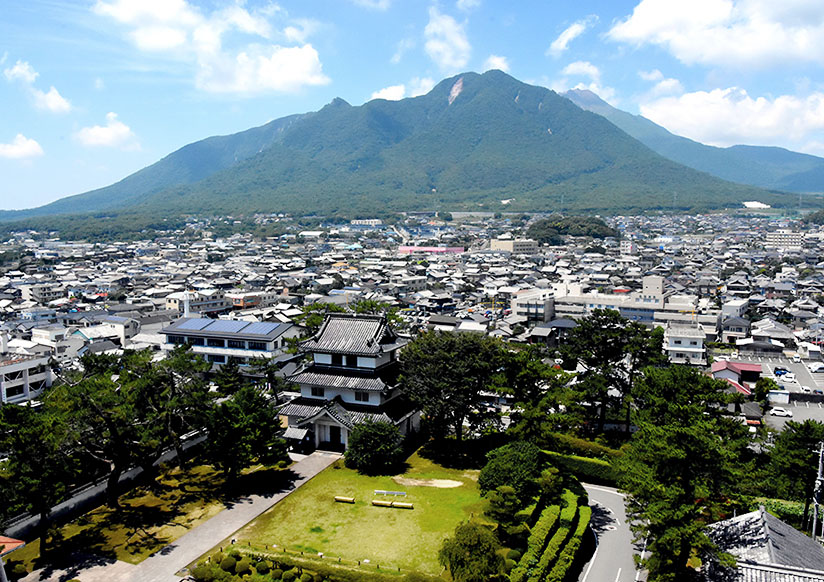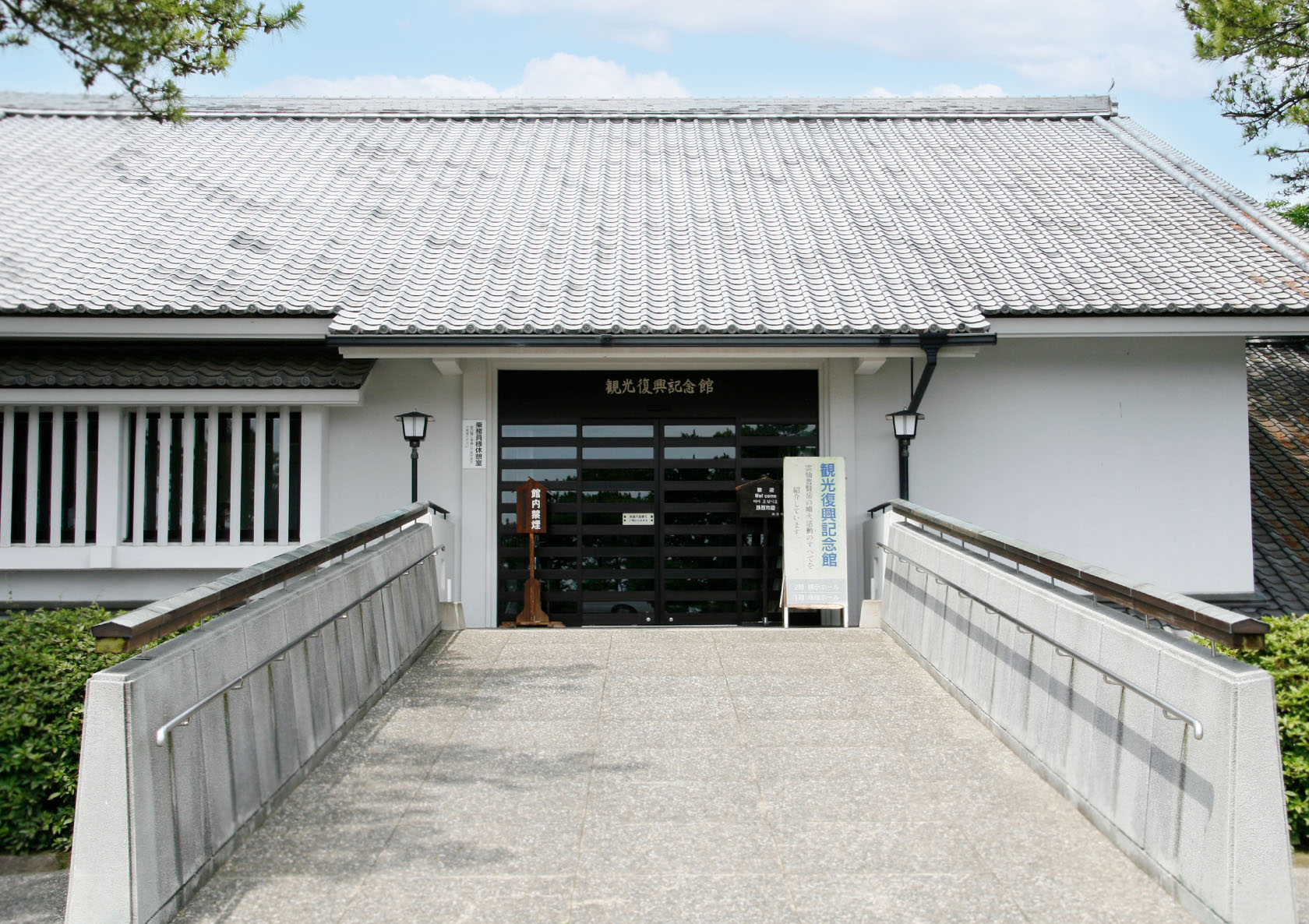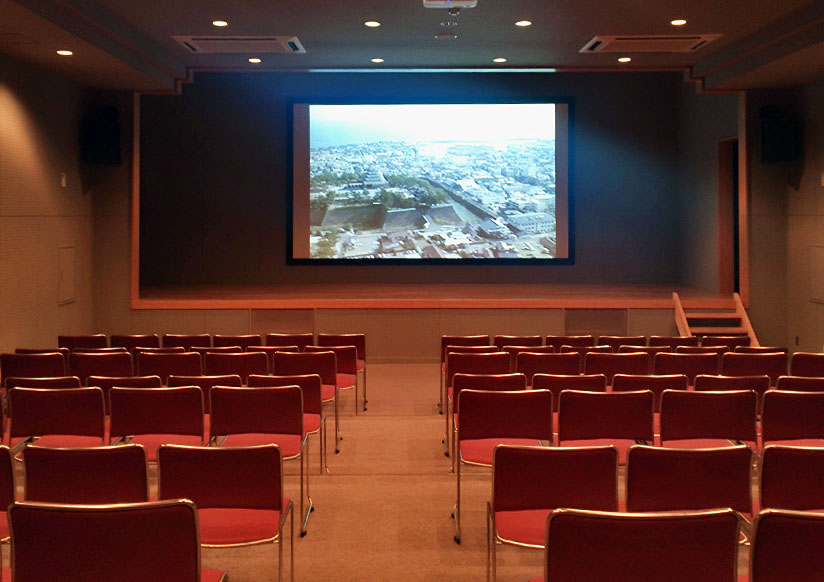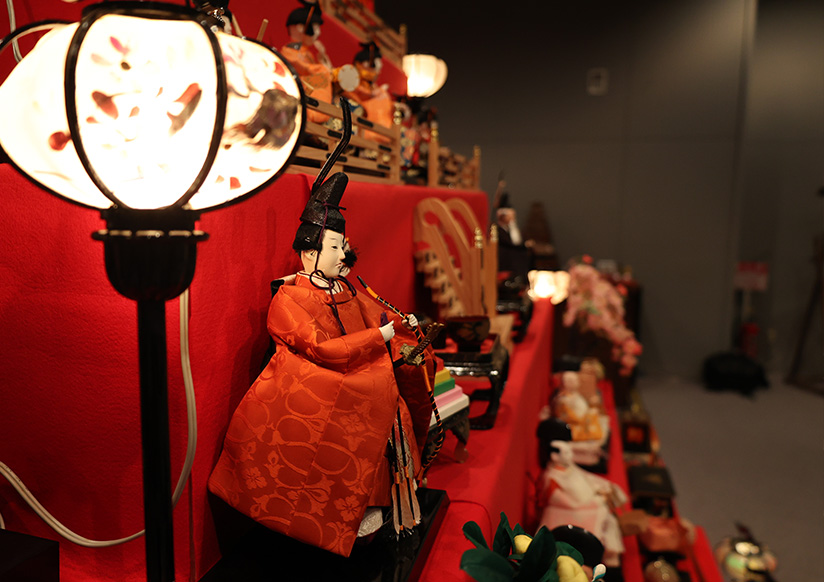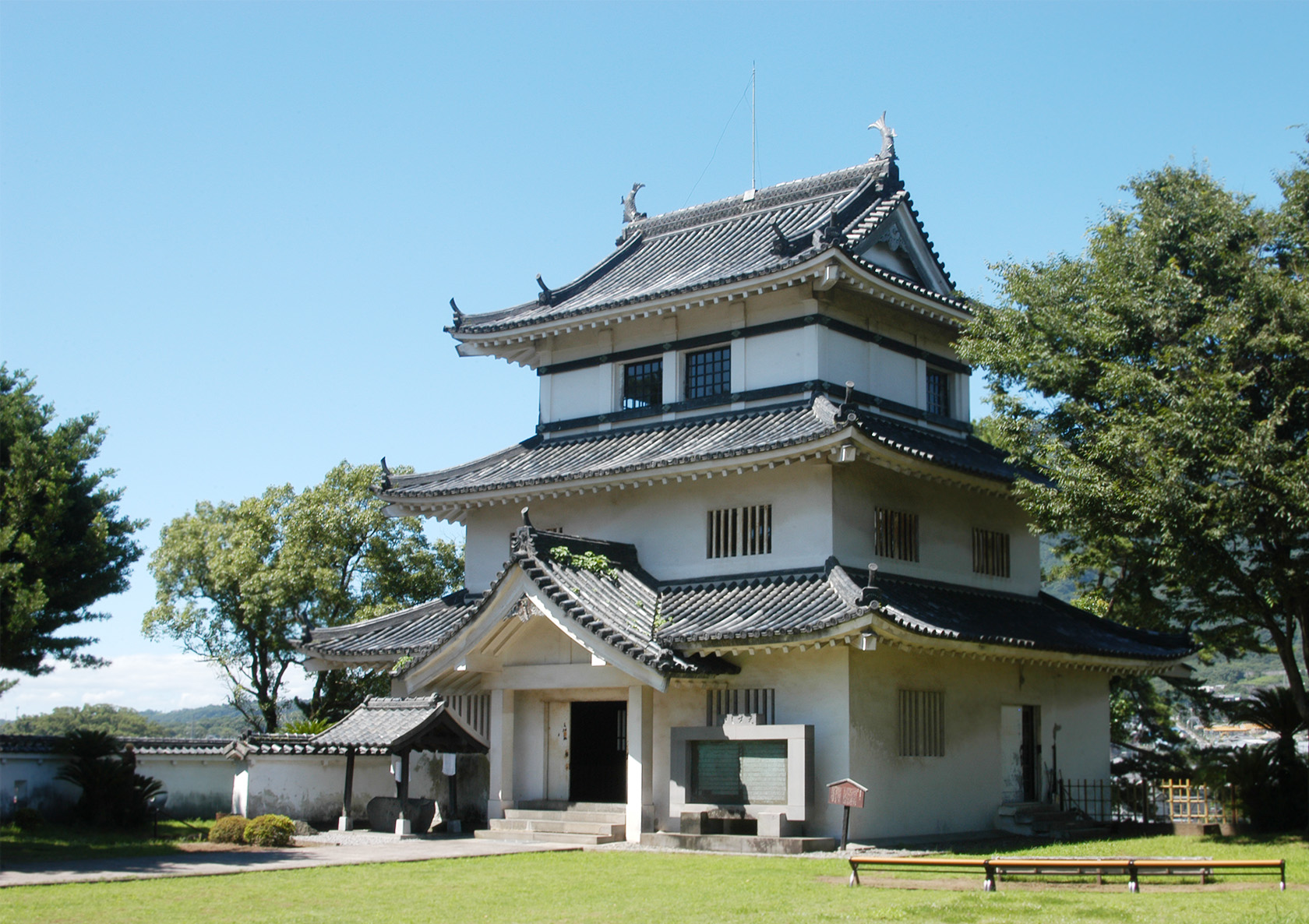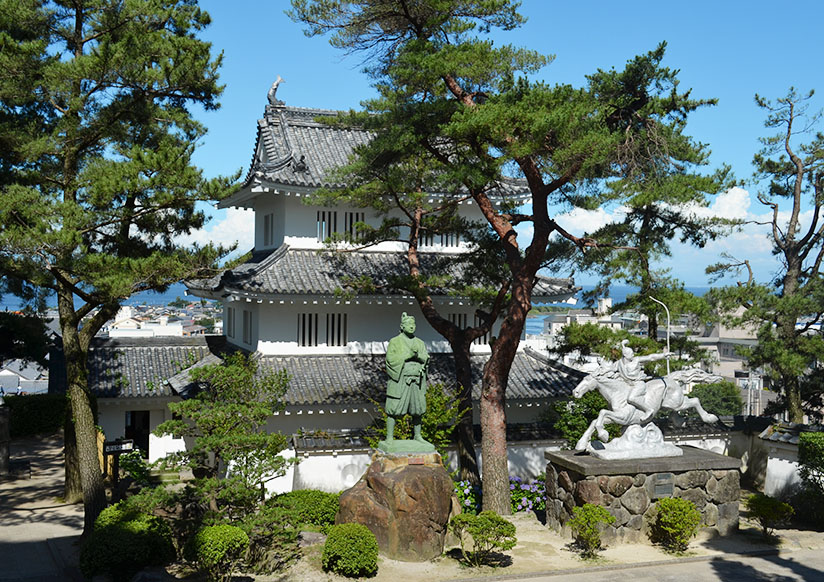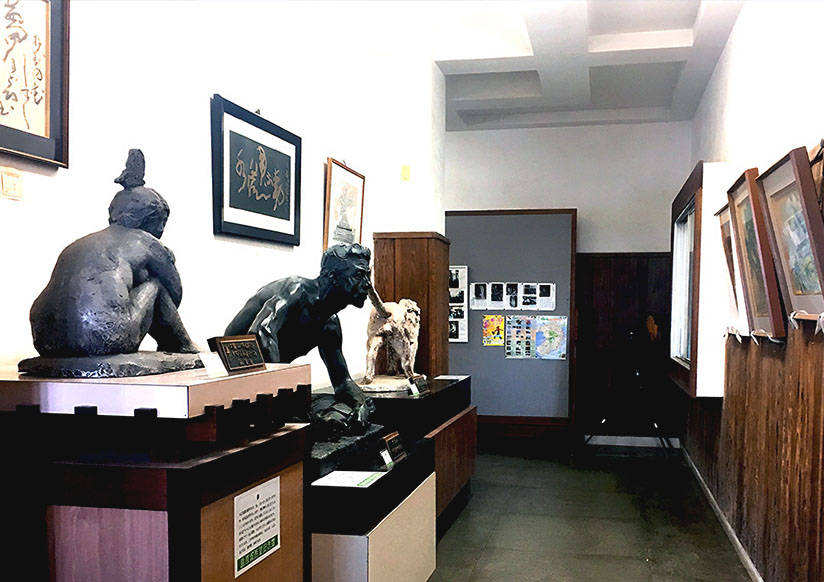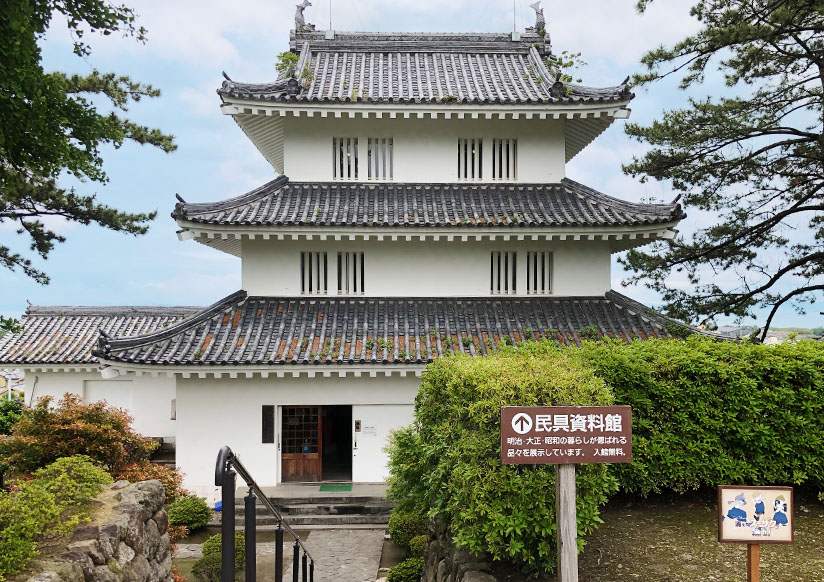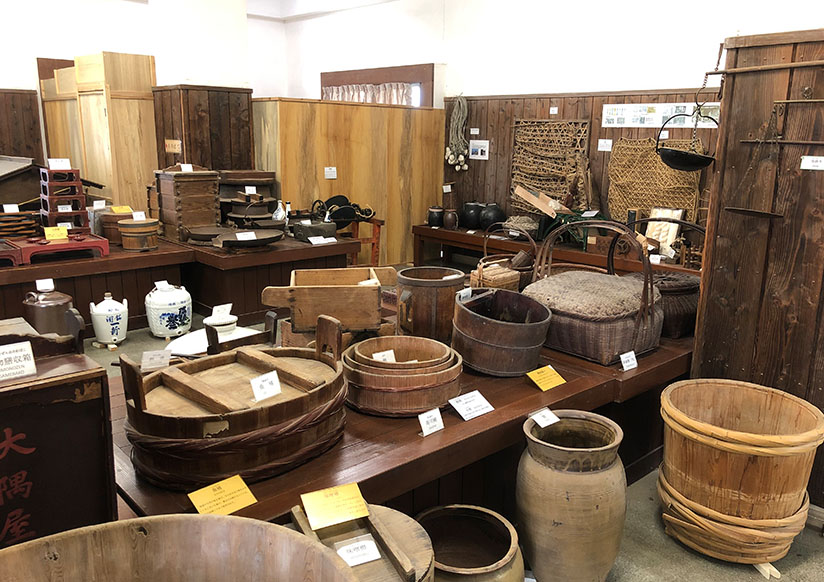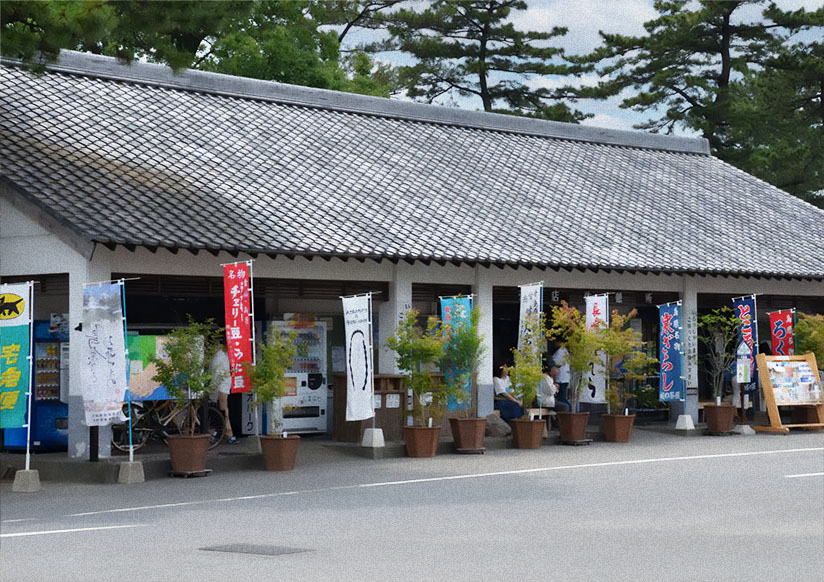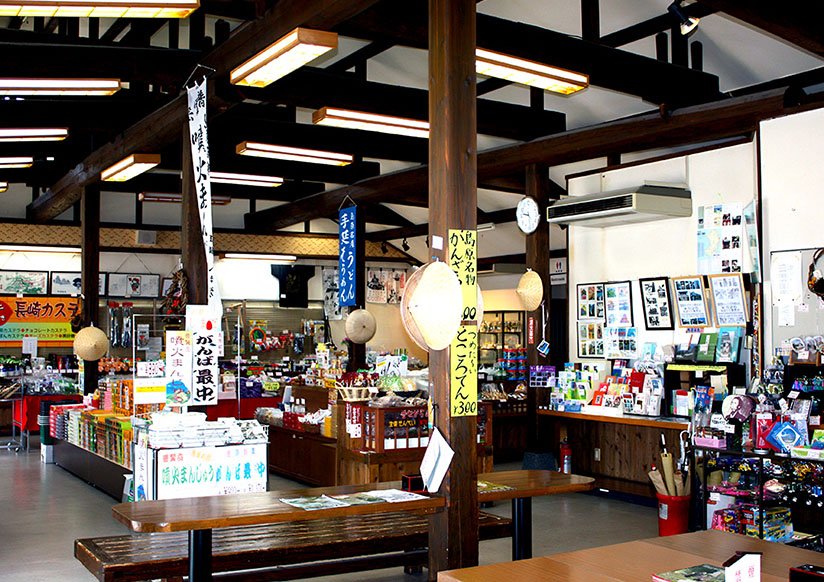Walking around the castle
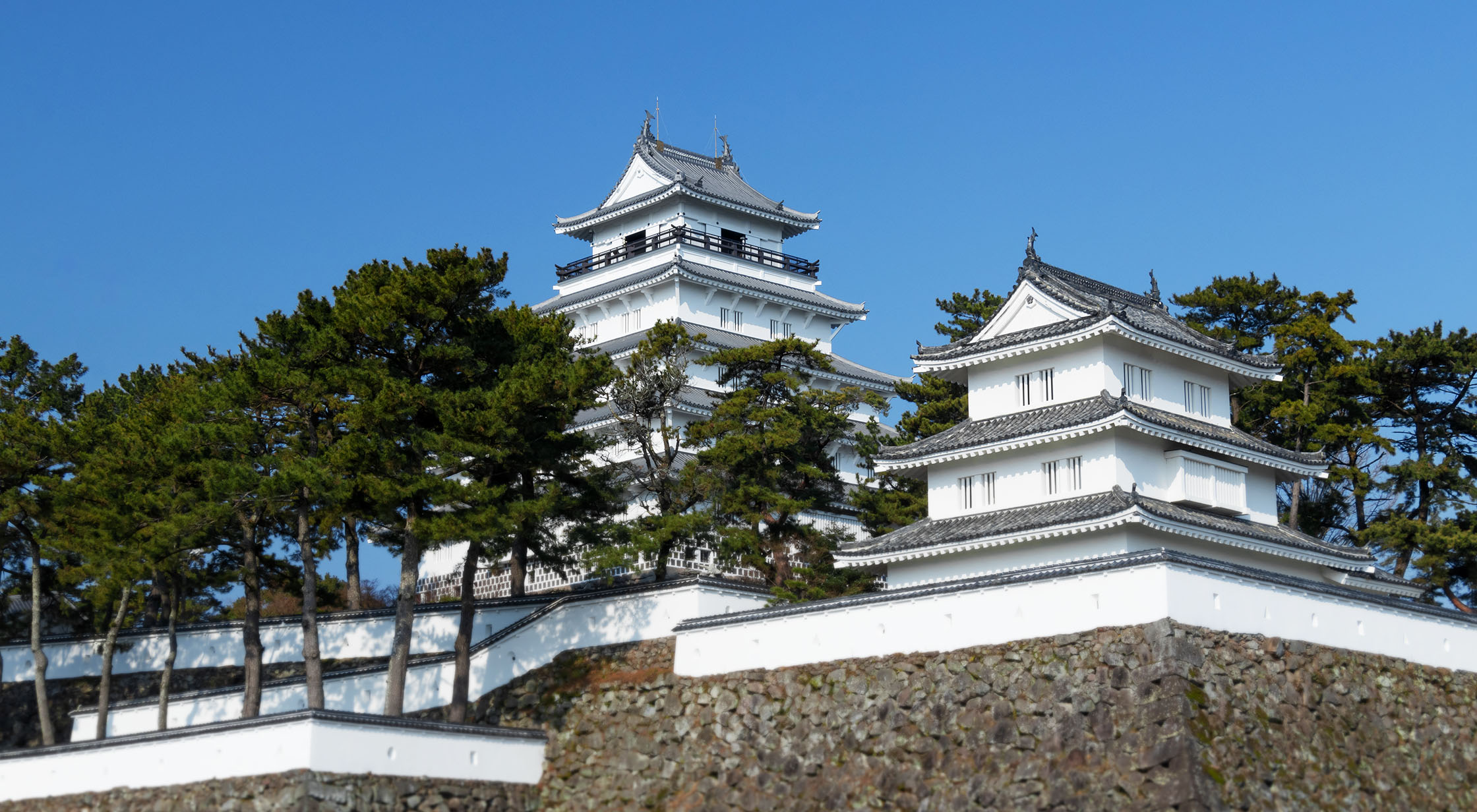
Castle tower
The castle tower houses Christian historical materials (1F), local historical materials (2F), folk historical materials (3F), and the keep and observation deck (5F).
Christian Historical Materials (1F)
● The Trade and Mission Period section exhibits artifacts from the flamboyant Christian culture and the Nanban migration.
At the end of the Warring States Period, the Portuguese arrived in succession and introduced a new European culture. Christianity and other cultures of the Nanban period flourished in the Shimabara region as well. Harunobu Arima, a feudal lord at that time, actively promoted trade with the Nanban and protected Christianity by becoming a Christian feudal lord himself. The Shimabara region thus became like a Christian kingdom. Churches were built throughout the territory, and a seminary (elementary seminary) was opened in Arima, and later a collegio (high school seminary) in Katsusa. Miguel Chidaishi and four other boys from the area traveled all the way to Rome and were granted an audience with the Pope. This glorious page in the history of East-West negotiations began here in Shimabara.
● In the section on the period of the apostasy, many testimonies of people who continued their faith in the face of severe oppression are collected.
Christianity was thriving, but this changed drastically with the Edo shogunate’s prohibition of Christianity and its isolation from the rest of the country, which began with Toyotomi Hideyoshi’s decree banning missionaries. The fierce Christian oppression began, and the local people were asked to make a stark choice: apostatize or lose their lives. Even in these difficult times, there were those who maintained their religious freedom. Known as “hidden Christians,” they continued their faith by likening the figures of Jesus and Mary to other statues in order to avoid publicity.
● The Shimabara Rebellion Corner has a collection of historical documents that tell the history of the Shimabara Rebellion that shook all of Japan.
Shigemasa Matsukura entered the country as the new lord of the castle, replacing the Arima clan. The new lord built Shimabara Castle and strongly promoted the reign of Shimabara. However, when his son Katsuie (Shigetsugu) succeeded him, his harsh policies toward the people continued, and the Shimabara Rebellion broke out. On display are a drawing by Amakusa Shiro depicting the 30,000 farmers who revolted, scenes from the fierce battle that lasted three months, a handmade spear used at the time, and an offensive map depicting shells fired into the city. The farmers holed up in the ruins of Hara Castle were annihilated, and the golden cross on which they must have prayed tells the story of their tragedy. After the war, the southern part of Shimabara territory became a penal colony, but gradually recovered. However, then Christianity was cracked down. This is evidenced by the fumi-e, prohibition notice board, and sect ninbetsucho.
Local History Materials (2F)
The lords changed rapidly from Arima, Matsukura, and Takanori, but after Matsudaira Tadafusa entered the country, stable rule continued for nearly 200 years. The people’s sentiment of the fiefdom also stabilizes, and culture and economy develop. Since generations of Shimabara feudal lords were learned men of learning, culture and learning flourished due in part to their influence. This local archives corner exhibits artifacts related to the feudal lords and Shimabara Castle. The tachi no shinki and The tachi no Shinchoku of the Matsudaira family and was also the guardian deity of the castle. Armor, helmets, and furniture with the crest of a heavy fan were used in the palace. In addition, the museum exhibits vassal’s armor, licenses, and books of secrets donated or commissioned by the vassals. It offers a glimpse into the rich local history and culture. The most prominent of these is the human anatomy chart. The autopsies were performed and recorded by Garai Sayuki, who taught medicine at Cheshukan, one of the schools of the Shimabara domain, and Ichikawa Yasuhaku, a doctor at the Imperial Palace, based on the knowledge of Western science they had learned from Siebold. It is a testament to the high level of Shimabara culture.
Folk History (3F)
Following the second floor’s Local Materials Corner, this section exhibits artifacts from the daily lives of ordinary people. There are pottery from the Shimabara region, weapons of the Shimabara clan soldiers, and to my surprise, an elephant from the Nanban crossing and a doll of a Kyobijin. It seems like time has stood still for a while, full of nostalgic, old-fashioned things.
castle tower / Observation Deck (5F)
You can enjoy a 360-degree view of Shimabara’s historic cityscape. You can view Shimabara city, Bizan (Mt. Bizan), and beyond the sea, the mountains of Kumamoto.
Tourism Reconstruction Memorial Hall
In the 120-seat video hall on the first floor, a 200-inch wide screen shows a 15-minute presentation on the progress of eruptive activity. The exhibition hall on the second floor is an exhibition space for special exhibitions and seasonal events.
West watchtower
Exhibits famous castle paintings and other works from all over Japan. Paintings of castles throughout Japan on Japanese towels and various kokeshi dolls characteristic of each prefecture are on display.
Seibou Memorial Hall
The museum was opened in 1972 (47th years Showa) to celebrate the American life span of Mr. Seimochi Kitamura, a local artist who was awarded the Order of Cultural Merit and a master of the Japanese sculpture world. The museum is one of the few museums in the world to trace the history of the artist’s nearly century-long creative career, and exhibits approximately 70 of his representative works. Full of strength and power, this is a unique work from the period when he was an aspiring sculptor. The Peace Statue is a statue of a man who lived through the turbulent period of the Great War and exploded with a desire for peace. His wish for peace has left a strong impression on our hearts. Even though he has passed the 60th birthday, he is still going strong and young again, and his creative activities are showing a new frontier. We are overwhelmed by his boundless creative activities. The large works displayed outdoors are surrounded by the seasonal colors of Shimabara Castle, adding flowers to the free approach of people walking along the promenade.
